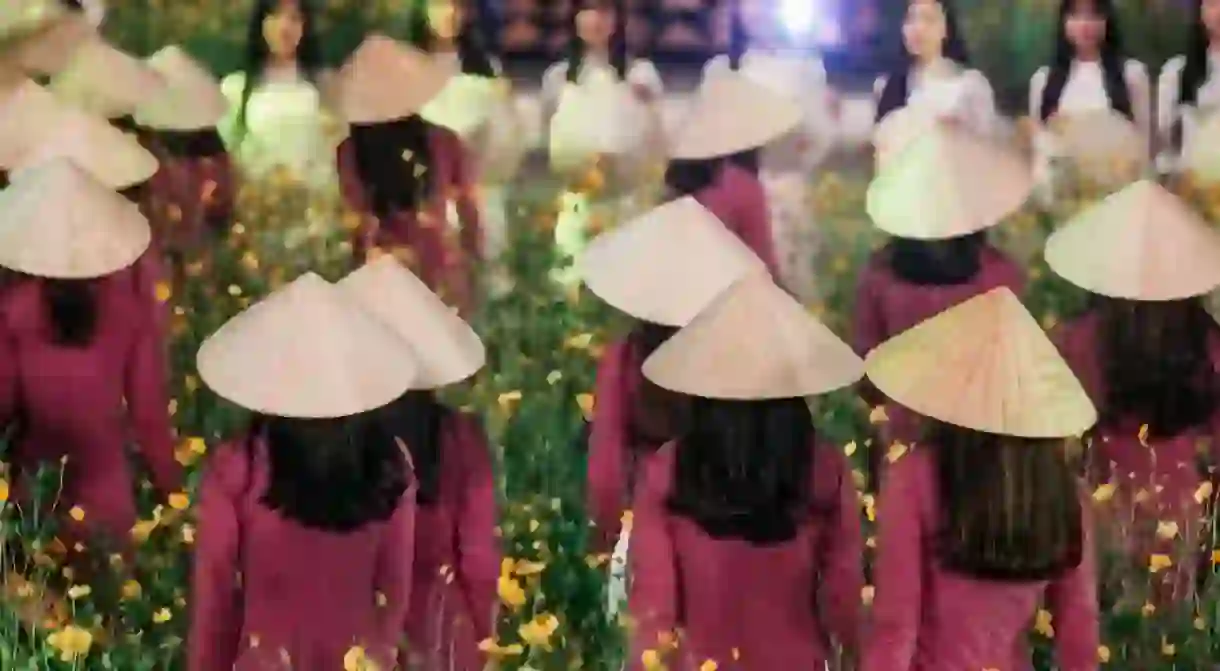How its Made: Traditional Vietnamese Áo Dài Dresses

The áo dài is the symbol of feminine beauty in Vietnam, and even as the modern world pushes in to replace some of the traditional ways of life here, the áo dài persists as the benchmark of elegance and refinement. We joined two experienced tailors in Huế to see how they make these wonderful garments.
Mrs. Thao’s Shop: Tân Nghiệp
Mrs. Thao inherited her 70-year-old shop from her father over 30 years ago. Even as the world shifts and moves around her, Mrs. Thao continues to use the same wooden ruler that her father used. In fact, the ruler is older than she is. According to Mrs. Thao, the whole process of making a plain áo dài takes around three hours – and that includes conferring with the customer, measuring, cutting, sewing, assembling and adding the accessories. If the customer wishes to add prints or manual embroidery, however, that adds considerable work. For customers who need an áo dài that same day, it can be done, but the typical delivery time is between a week and 10 days.
Nhà May Tân Nghiệp, 221 Phan Đăng Lưu Street, Huế City, Vietnam +84 234 3831 041




Measure and cut
Customers sometimes bring in their own fabrics, but usually they choose from what’s available in the shop. Once the client has been measured, Mrs. Thao cuts the required pieces, ensuring as little waste as possible. Because silk flows and stretches so easily, tailors must use a wooden ruler to smooth out the folds before cutting. Without the ruler, the lines wouldn’t be straight. Cutting techniques – and even the scissors themselves – are passed on between generations of shop owners.







Mrs. Mai’s Shop: Cuộc
Mrs. Mai stocks fabrics to match styles and tastes that stretch back many decades, always keeping on top of the changing demands of her many customers. The latest trends for this year’s Tết holiday, she told us, are bright colours and embroidered floral patterns. But colours and patterns are only part of the story. Mrs. Mai must also keep abreast of any new styles that emerge. From the lengths of the flaps to the fit, the áo dài has gone through many changes in the last century, and shop owners like Mrs. Mai need to be able to fulfil any request.


Sewing and the finishing touches
Making an áo dài is usually a team effort. Mrs. Mai employs four assistants in her shop and hopes to hire more in the future. Different assistants handle different parts of the áo dài: the neck, sleeves, back and front flaps, seams, waist, hooks and pants. Once the pieces are assembled, they add any additional artwork that the customer has requested. This is the most time-consuming part of the process, as manual embroidery can take up to 20 days to complete.
A few days before the delivery date, the customer will come in to try on the áo dài so the team can make any final alterations. Mrs. Mai told us that a normal áo dài takes seven to 10 days, depending on the time of year. Her shop is the busiest during wedding season, back to school and in the peak tourism months, which come around Tết.




















